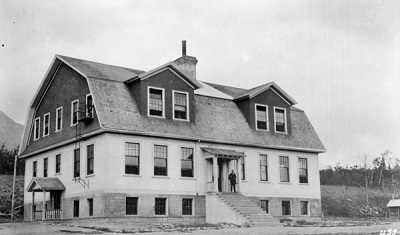The Residential School System National Historic Event
Multiple plaque locations

Carcross Indian Residential School, Yukon
© Canada. Dept. of Interior | ministère de l'Intérieur / Library and Archives Canada | Bibliothèque et Archives Canada / PA-044668
Address :
Multiple plaque locations
Recognition Statute:
Historic Sites and Monuments Act (R.S.C., 1985, c. H-4)
Designation Date:
2019-06-05
Other Name(s):
-
The Residential School System
(Designation Name)
Research Report Number:
2019-01, 2019-02
Importance:
Part of a policy of assimilation imposed on Indigenous Peoples by the federal government and certain churches resulting in intergenerational harm to First Nations, Inuit and Métis children, their families, and communities
Plaque(s)
Existing plaque: St-Marc-de-Figuery (Amos), Quebec
Anicinapek and Atikamekw Nehirowisiw children were uprooted from their families, who had raised them with love and the freedom to live closely with nature. Forced to attend this residential school created by the federal government and run by the Catholic Church, they were subjected to abuse, strict discipline, and severe punishment. They lost their identity and their language, which had been spoken for generations. This residential school was part of a policy of assimilation, described as cultural genocide by the Truth and Reconciliation Commission. During this period, parents suffered destructive repercussions, struggling to recover and rebuild their families. This place supports healing from intergenerational trauma and serves as a site of memory.